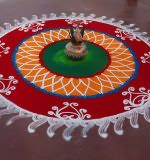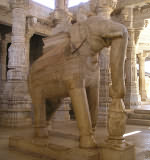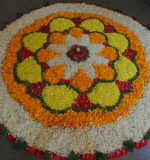| Скачайте и установите необходимые шрифты, чтобы санскрит отображался во всей его красе Прочтите Транслитерация (2) (русский), чтобы полностью понять систему транслитерации |
Изучение санскрита - Правила сандхи
Правила сандхи или слияния (полный список)
| VOWEL SANDHI | |||||||
| Prim. Rules | Sec. Rules | VISARGA SANDHI | CONSONANT SANDHI | ||||
| See Combination for more information | |||||||
Vowel Sandhi: Primary Rules
| 1st Primary Rule Two Sanskrit vowels cannot be placed together (one following the other). |
| 2nd Primary Rule Guṇa is formed from adding "a" or "ā" to the simple vowels. If the process is repeated, Vṛddhi is formed thereby. |
| 3rd Primary Rule If a simple vowel (not a diphthong), short or long, be followed by a similar vowel, short or long, both of them will merge into the similar long vowel. |
| 4th Primary Rule When "i-ī, u-ū, ṛ-ṝ and ḷ" are followed by a dissimilar vowel, then "y, v, r and l" are respectively substituted for them. |
| 5th Primary Rule When "a" or "ā" are followed by a vṛddhi letter, both of them will be absorbed into the vṛddhi letter. |
Vowel Sandhi: Secondary Rules
| 1st Secondary Rule When a dual form (verb, pronoun or noun) ends in "ī", "ū" or "e" is not to be combined, that is, no Sandhi is possible here. |
| 2nd Secondary Rule When "ṛ" or "ḷ" be followed by "ṛ" or "ḷ"; "ṛ" or "ḷ" may optionally be substituted for both. |
| 3rd Secondary Rule When "a" is followed by the sacred word "Om" or the word "ā", is dropped. |
| 5th Secondary Rule When "i-ī", "u-ū", "ṛ-ṝ" or "ḷ" at the end of a word are followed by a dissimilar vowel (except in a compound), are optionally not combined, and when so they are shortened if long. |
| 6th Secondary Rule When "a-ā", "i-ī", "u-ū" and "ḷ-ḹ" at the end of a word are followed by "ṛ" (short form only), are optionally not combined, and when so they are shortened if long. |
VISARGA SANDHI
| 5th Rule When "dviḥ", "triḥ" and "catuḥ" play the role of adverbs showing frequency, they change optionally their Visarga to "ṣ" if followed by a hard consonant belonging to guttural or labial class. |
| 7th Rule When Visarga is preceded by any vowel (except "a" or "ā") and followed by a vowel or a soft consonant is to be transformed into "r". |
| 8th Rule When a word ending in "r" (either originally or after applying the previous 7th Rule) is followed by "r" or "ḍh", the final "r" is dropped, and any preceding "a", "i" or "u" is made long. |
Consonant Sandhi
| 1st Rule No Sanskrit word can end in two or more consonants. The only exceptions are the endings "rk", "rṭ", "rt" and "rp". (Roots are not to be included in this rule) |
| 6th Rule If a final consonant, except "r" or "h", be followed by a Nasal, the Nasal of its class is optionally substituted for it. |
| 9th Rule When "ś" is both preceded by a word ending in any of the first four letters of a class and followed by a Vowel, a Semivowel, a Nasal or "h", is optionally transformed into "ch". |
| 10th Rule The letter "m" situated at the end of a word is to be always transformed into Anusvāra when followed by a Consonant. |
| 21st Rule (1st sub-rule) When followed by "l", any Dental letter (except "n" and "s") is changed to "l". (2nd sub-rule) When followed by "l", "n" is to be turned into nasalized "l". |
| 22nd Rule When a Dental letter (except "s") is followed by "ṣ", it does not substitute its corresponding Cerebral. In other words, Dental letters (except "s") remain unaffected before "ṣ". |
Further Information
Этот документ был составлен Габриэлем Pradīpaka, одним из двух основателей этого сайта, духовным гуру, экспертом в санскрите и философии Трика.
Для получения дополнительной информации о санскрите, йоге и философии, или если вы просто хотите оставить комментарий, задать вопрос или нашли ошибку, напишите нам: Это наша электронная почта.





























